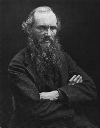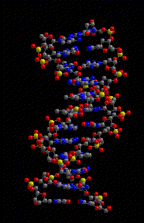Although knots have been around for thousands of years, they have only been a particular fascination for mathematicians for a little over a century.
In the  late 1800’s, most scientists believed that the universe was filled with a mysterious substance called ether, and all matter was thought to be entangled in it. Lord Kelvin (pictured left) proposed that each element should have unique signature based on how the element knotted up the ether surrounding it. This led many scientists to theorize that they could understand the elements by simply studying knots, so mathematicians the world over began to construct tables of knots and their pictures.
late 1800’s, most scientists believed that the universe was filled with a mysterious substance called ether, and all matter was thought to be entangled in it. Lord Kelvin (pictured left) proposed that each element should have unique signature based on how the element knotted up the ether surrounding it. This led many scientists to theorize that they could understand the elements by simply studying knots, so mathematicians the world over began to construct tables of knots and their pictures.
However, soon enough the atomic revolution dismissed the theory of ether, and mathematicians were left alone in pursuit of Knot Theory for almost a century.
In the 1980’s, biologists and chemists studying genetics found that deoxyribonucleic acid (DNA) can sometimes become tangled. Experiments suggested that how a DNA strand knots might have an impact on the properties of the resulting strand after replication.
Once geneticists became interested in knots, other scientists joined in again, as well. The fact that genetics is such a young and extremely interesting field of inquiry has led to a renewal of interest in studying Knot Theory from an applied mathematical perspective.
To learn more about what Knot Theory and DNA have in common, jump to the DNA & KT Today page!

